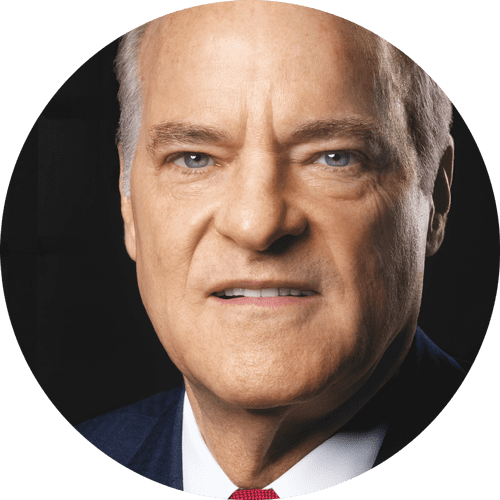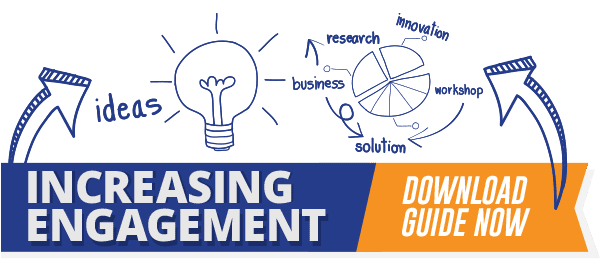[cs_content][cs_element_section _id=”1″ ][cs_element_row _id=”2″ ][cs_element_column _id=”3″ ][x_image type=”none” src=”https://davidnovakleadership.com/wp-content/uploads/2020/01/kravis-circle.png” alt=”” link=”false” href=”#” title=”” target=”” info=”none” info_place=”top” info_trigger=”hover” info_content=”” style=”border:8px solid rgba(0,0,0,0.10);border-radius:50%;”][x_share title=”Share this Post” share_title=”” facebook=”true” twitter=”true” google_plus=”false” linkedin=”true” pinterest=”false” reddit=”false” email=”false” email_subject=”Hey, thought you might enjoy this! Check it out when you have a chance:”][cs_text][/cs_text][/cs_element_column][cs_element_column _id=”7″ ][cs_element_audio _id=”8″ ][x_gap size=”30px”][cs_element_content_area_modal _id=”10″ ][cs_text]
Henry Kravis of the world’s greatest business leaders and philanthropists. He co-founded one of the most renown global investment companies, Kohlberg Kravis Roberts & Company (KKR) in 1976 and currently serves as KKR’s Co-Chairman and Co-Chief Executive Officer. Mr. Kravis has been referred to as the father of private equity, an industry that he helped pioneer. Under the leadership of Henry Kravis, KKR has grown to a $200B private equity giant with substantial investment interest in over 100 companies and nearly a million employees around the world.
Mr. Kravis currently serves on the boards of First Data Corporation and ICONIQ Capital, LLC. He also serves as a director, chairman emeritus, or trustee of several other cultural, professional, and educational institutions, including the Business Council, Claremont McKenna College, Columbia Business School (co-chairman), Mount Sinai Hospital, the Partnership for New York City (former chairman), the Partnership Fund for New York City (founder), Rockefeller University (vice chairman), Sponsors for Educational Opportunity (chairman), and the Tsinghua School of Economics and Management in China.
[/cs_text][x_gap size=”40px”][cs_text style=”margin-top:-20px;”][bctt tweet=”“I’m a big believer that if you have a common objective and common values and mutual respect, and don’t worry about who gets credit, you can go a long, long way.””][/cs_text][/cs_element_column][/cs_element_row][/cs_element_section][cs_element_section _id=”14″ ][cs_element_row _id=”15″ ][cs_element_column _id=”16″ ][x_gap size=”40px”][cs_text style=”line-height:1;”][bctt tweet=”“We wanted a ‘We’ culture, not an ‘I’ culture. And so that was very simple and very easy to do. That took maybe a couple minutes, because we all three were in absolute agreement. And here we are 43 years later, David. Our culture, even though we now have about 1,300 people, and we’ve got $210 billion of assets under management of 21 offices, it’s identical to what we set up.””]
[/cs_text][/cs_element_column][cs_element_column _id=”19″ ][cs_text]
Through KKR, Henry helped to pioneer private equity as a fund option, and since his first private equity leverage buyout in the 70s, the market has exploded with hundreds of small private equity firms vying with firms like Blackstone, Apollo, and KKR.
“KKR has expanded into new business segments since the launch of their first private equity fund. The company holds investments in a wide range of income-producing real estate throughout the United States. This includes office rentals, retail spaces and health care properties. In 2013, KKR raised $1.2 billion for a real estate investment fund. KKR also constructs and manages hedge funds. The firm was listed on the New York Stock Exchange in 2010 and raised $1.25 billion from its initial public offering (IPO).” –Investopia article.
Shareable Insights
[/cs_text][/cs_element_column][/cs_element_row][/cs_element_section][cs_element_section _id=”21″ ][cs_element_row _id=”22″ ][cs_element_column _id=”23″ ][x_custom_headline level=”h2″ looks_like=”h3″ accent=”true”]Recent Episodes[/x_custom_headline][x_recent_posts type=”post” count=”4″ offset=”0″ category=”podcast” orientation=”horizontal” no_sticky=”false” no_image=”false” fade=”true”][/cs_element_column][/cs_element_row][/cs_element_section][cs_element_section _id=”26″ ][cs_element_row _id=”27″ ][cs_element_column _id=”28″ ][x_custom_headline level=”h2″ looks_like=”h2″ accent=”false” class=”mtn”]Attract and retain top talent by providing your managers with “must-have” leadership skills.[/x_custom_headline][x_custom_headline level=”h2″ looks_like=”h2″ accent=”false” class=”mtn hidden”]Building People Capability First Leads To:[/x_custom_headline][/cs_element_column][/cs_element_row][cs_element_row _id=”31″ ][cs_element_column _id=”32″ ][x_image type=”none” src=”https://ogolead.com/wp-content/uploads/2019/05/Recognition-course.jpg” alt=”” link=”true” href=”/purposeful-recognition/” title=”” target=”” info=”none” info_place=”top” info_trigger=”hover” info_content=””][x_custom_headline level=”h2″ looks_like=”h3″ accent=”false” class=”mtn”]Purposeful Recognition[/x_custom_headline][cs_text class=”trio-links”]
The Secret to Achieving
Great Results
[/cs_text][cs_element_row_2 _id=”36″ ][cs_element_column_2 _id=”37″ ][x_button size=”small” block=”false” circle=”false” icon_only=”false” href=”https://ogolead.com/buy-recognition/” title=”” target=”” info=”none” info_place=”top” info_trigger=”hover” info_content=”” style=”min-width:175px;”]Buy Now[/x_button][cs_text style=”font-size:13px;margin-top:10px;”]
For Individuals
[/cs_text][/cs_element_column_2][cs_element_column_2 _id=”40″ ][x_button size=”small” block=”false” circle=”false” icon_only=”false” href=”https://ogolead.com/contact/” title=”” target=”” info=”none” info_place=”top” info_trigger=”hover” info_content=”” style=”min-width:175px;”]Contact Us[/x_button][cs_text style=”font-size:13px;margin-top:10px;”]
For Team Pricing
[/cs_text][/cs_element_column_2][/cs_element_row_2][cs_text class=”trio-links”]Learn More[/cs_text][/cs_element_column][cs_element_column _id=”44″ ][x_image type=”none” src=”https://ogolead.com/wp-content/uploads/2019/05/ELT-course.jpg” alt=”” link=”true” href=”/essential-leadership/” title=”” target=”” info=”none” info_place=”top” info_trigger=”hover” info_content=””][x_custom_headline level=”h2″ looks_like=”h3″ accent=”false” class=”mtn” style=”color: #17348d;”]Essential Leadership Traits[/x_custom_headline][cs_text class=”trio-links”]
Learn the Soft Skills
that Drive Hard Results
[/cs_text][cs_element_row_2 _id=”48″ ][cs_element_column_2 _id=”49″ ][x_button size=”small” block=”false” circle=”false” icon_only=”false” href=”https://ogolead.com/buy-elt/” title=”” target=”” info=”none” info_place=”top” info_trigger=”hover” info_content=”” style=”min-width:175px;”]Buy Now[/x_button][cs_text style=”font-size:13px;margin-top:10px;”]
For Individuals
[/cs_text][/cs_element_column_2][cs_element_column_2 _id=”52″ ][x_button size=”small” block=”false” circle=”false” icon_only=”false” href=”https://ogolead.com/contact/” title=”” target=”” info=”none” info_place=”top” info_trigger=”hover” info_content=”” style=”min-width:175px;”]Contact Us[/x_button][cs_text style=”font-size:13px;margin-top:10px;”]
For Team Pricing
[/cs_text][/cs_element_column_2][/cs_element_row_2][cs_text class=”trio-links”]Learn More[/cs_text][/cs_element_column][/cs_element_row][/cs_element_section][cs_element_section _id=”56″ ][cs_element_row _id=”57″ ][cs_element_column _id=”58″ ][cs_text]
Have you ever experienced a failure? What did you learn?
If your colleague disagreed with you, how would you respond?
Feedback is a gift, something we have lost in Corporate America. Becky says, “If I am not giving you feedback, then I am not investing in you. If I’m not getting feedback, people aren’t invested in me.”
What is the best piece of constructive feedback you’ve ever received?
[/cs_text][/cs_element_column][/cs_element_row][/cs_element_section][/cs_content][cs_content_seo]Share this PostFree Leadership Insights
View Transcript
Henry Kravis of the world’s greatest business leaders and philanthropists. He co-founded one of the most renown global investment companies, Kohlberg Kravis Roberts & Company (KKR) in 1976 and currently serves as KKR’s Co-Chairman and Co-Chief Executive Officer. Mr. Kravis has been referred to as the father of private equity, an industry that he helped pioneer. Under the leadership of Henry Kravis, KKR has grown to a $200B private equity giant with substantial investment interest in over 100 companies and nearly a million employees around the world.
Mr. Kravis currently serves on the boards of First Data Corporation and ICONIQ Capital, LLC. He also serves as a director, chairman emeritus, or trustee of several other cultural, professional, and educational institutions, including the Business Council, Claremont McKenna College, Columbia Business School (co-chairman), Mount Sinai Hospital, the Partnership for New York City (former chairman), the Partnership Fund for New York City (founder), Rockefeller University (vice chairman), Sponsors for Educational Opportunity (chairman), and the Tsinghua School of Economics and Management in China.
“I'm a big believer that if you have a common objective and common values and mutual respect, and don't worry about who gets credit, you can go a long, long way.” Click To Tweet
“We wanted a 'We' culture, not an 'I' culture. And so that was very simple and very easy to do. That took maybe a couple minutes, because we all three were in absolute agreement. And here we are 43 years later, David. Our… Click To Tweet
Through KKR, Henry helped to pioneer private equity as a fund option, and since his first private equity leverage buyout in the 70s, the market has exploded with hundreds of small private equity firms vying with firms like Blackstone, Apollo, and KKR.
“KKR has expanded into new business segments since the launch of their first private equity fund. The company holds investments in a wide range of income-producing real estate throughout the United States. This includes office rentals, retail spaces and health care properties. In 2013, KKR raised $1.2 billion for a real estate investment fund. KKR also constructs and manages hedge funds. The firm was listed on the New York Stock Exchange in 2010 and raised $1.25 billion from its initial public offering (IPO).” –Investopia article.
Shareable Insights
Recent EpisodesCity National Bank CEO, Kelly Coffey03/10/2020Goldman Sachs Chairman & CEO, David Solomon02/27/2020KPMG Chairman & CEO, Lynne Doughtie02/11/2020Henry Kravis, Co-Founder, Co-Chairman & Co-CEO of Kohlberg Kravis Roberts & Co. | Part 202/06/2020
Attract and retain top talent by providing your managers with “must-have” leadership skills.Building People Capability First Leads To:
Purposeful RecognitionThe Secret to Achieving
Great Results
Buy NowFor Individuals
Contact UsFor Team Pricing
Learn More
Essential Leadership TraitsLearn the Soft Skillsthat Drive Hard Results
Buy NowFor Individuals
Contact UsFor Team Pricing
Learn More
From Podcast Action Journal
Becky recalls a significant failure in her career. She was working with someone she respected to launch a new product. Becky thought they should do it in a specific way, but her colleague didn’t agree. Becky relented, and later a competitor launched the product her way with great success. Becky knew she was right but second-guessed herself. Despite the failure, she is grateful that it happened when she was young. She learned that the next time she needed to fight harder.
Have you ever experienced a failure? What did you learn?
If your colleague disagreed with you, how would you respond?
Becky has the following thoughts on recognition:
Feedback is a gift, something we have lost in Corporate America. Becky says, “If I am not giving you feedback, then I am not investing in you. If I’m not getting feedback, people aren’t invested in me.”
What is the best piece of constructive feedback you’ve ever received?

 [/cs_content_seo]
[/cs_content_seo]
























 Did you know I used the same Pyramid Slide for five years? This single slide provided a roadmap for KFC brand revitalization, which was much needed at the time, and it helped us stay the course over the next five years. Our True North, or the top of the Pyramid, was Brand Positioning. All other levels of the Pyramid were viewed through the lens of Brand Positioning. We asked questions like the ones below around each level of the Pyramid to stay on course: Given who we are as a brand,
Did you know I used the same Pyramid Slide for five years? This single slide provided a roadmap for KFC brand revitalization, which was much needed at the time, and it helped us stay the course over the next five years. Our True North, or the top of the Pyramid, was Brand Positioning. All other levels of the Pyramid were viewed through the lens of Brand Positioning. We asked questions like the ones below around each level of the Pyramid to stay on course: Given who we are as a brand, 





